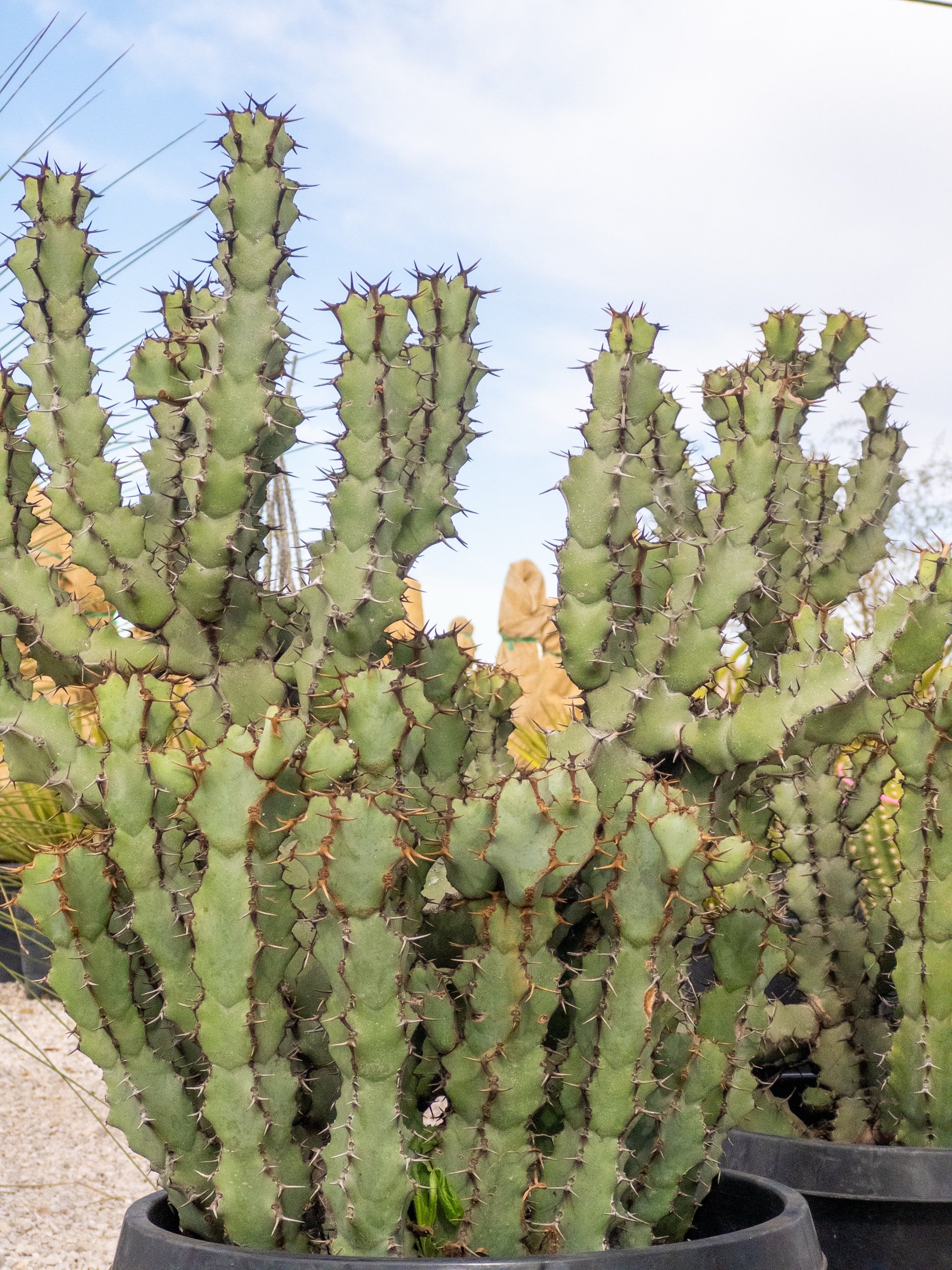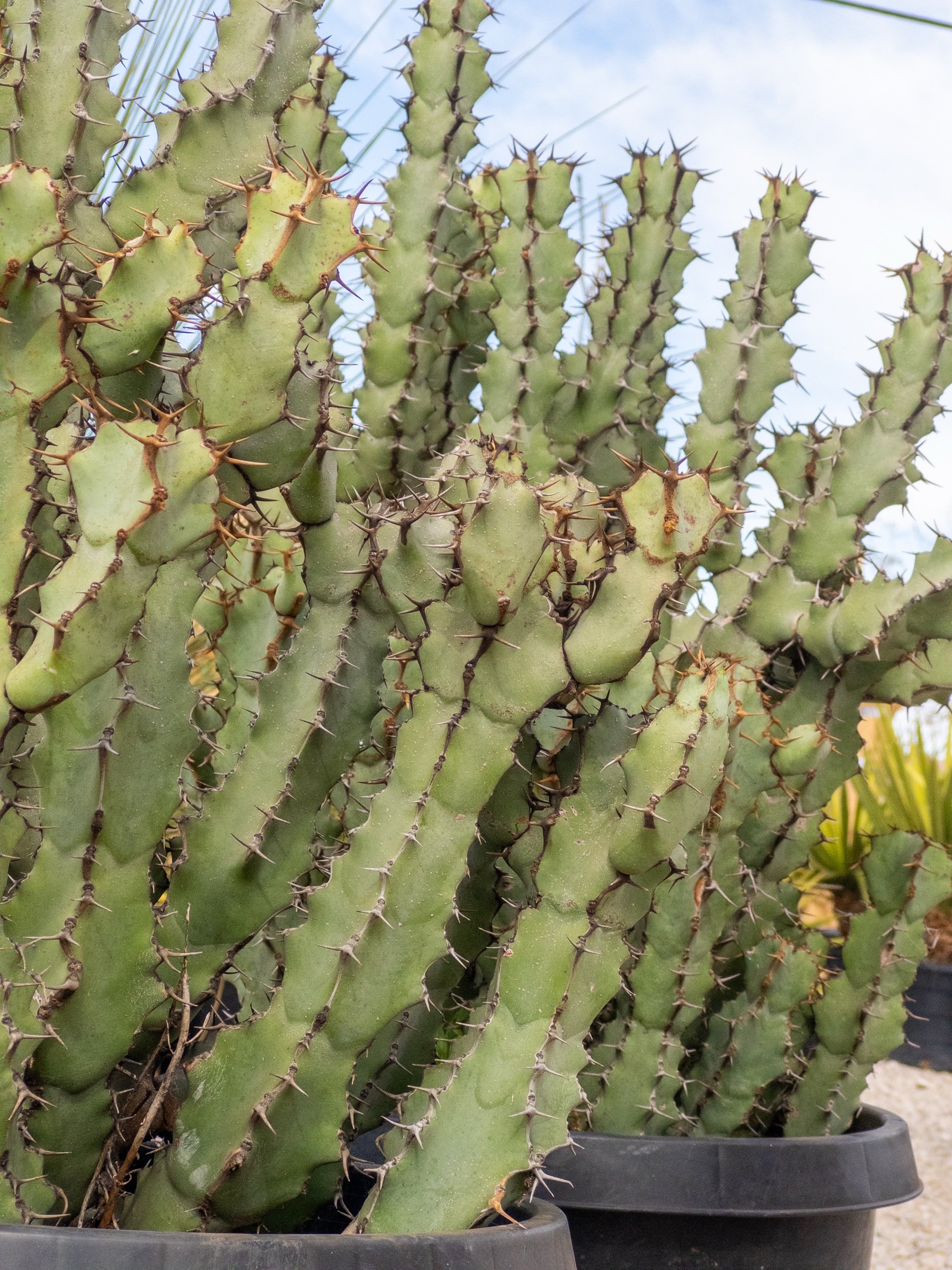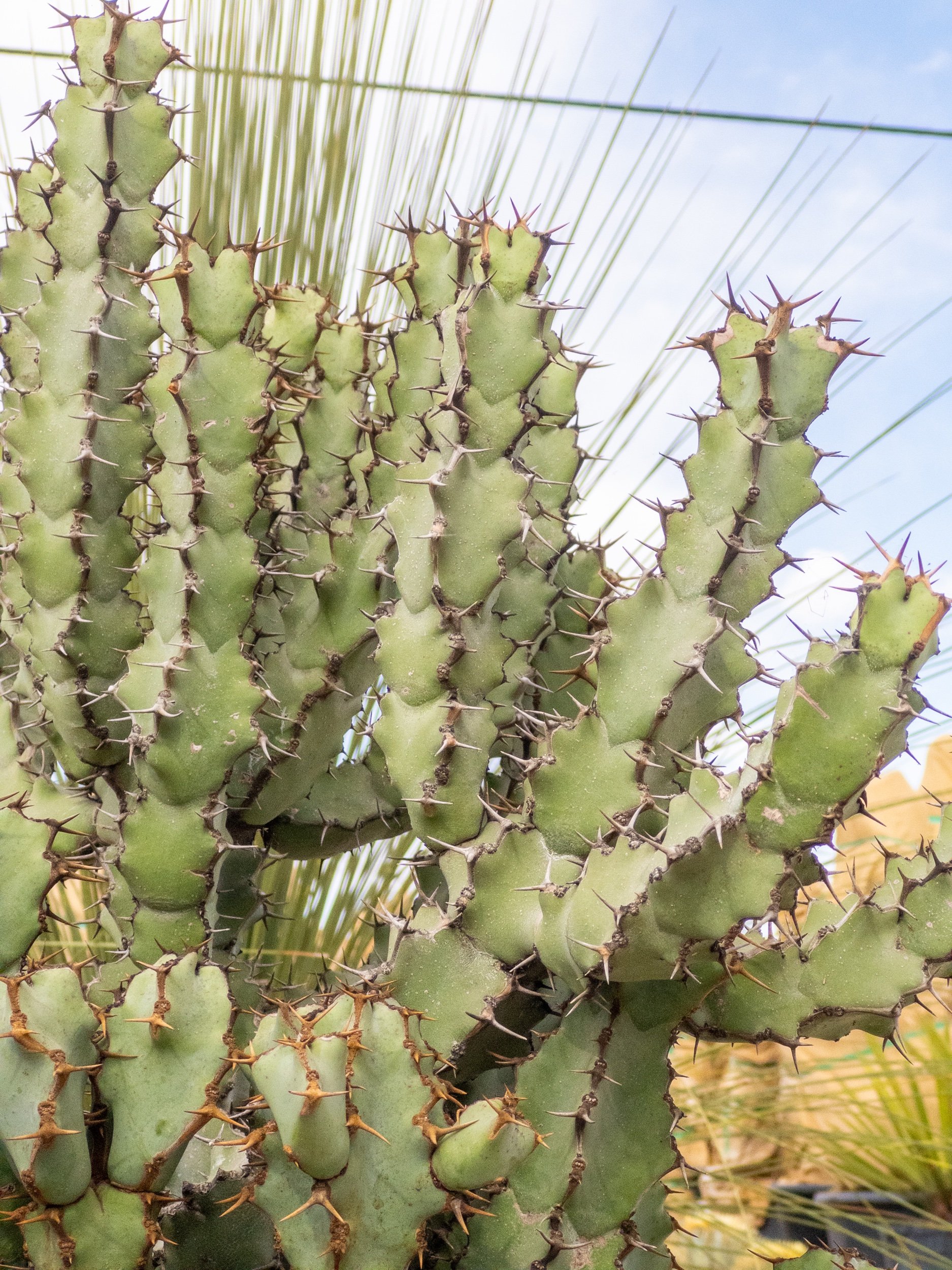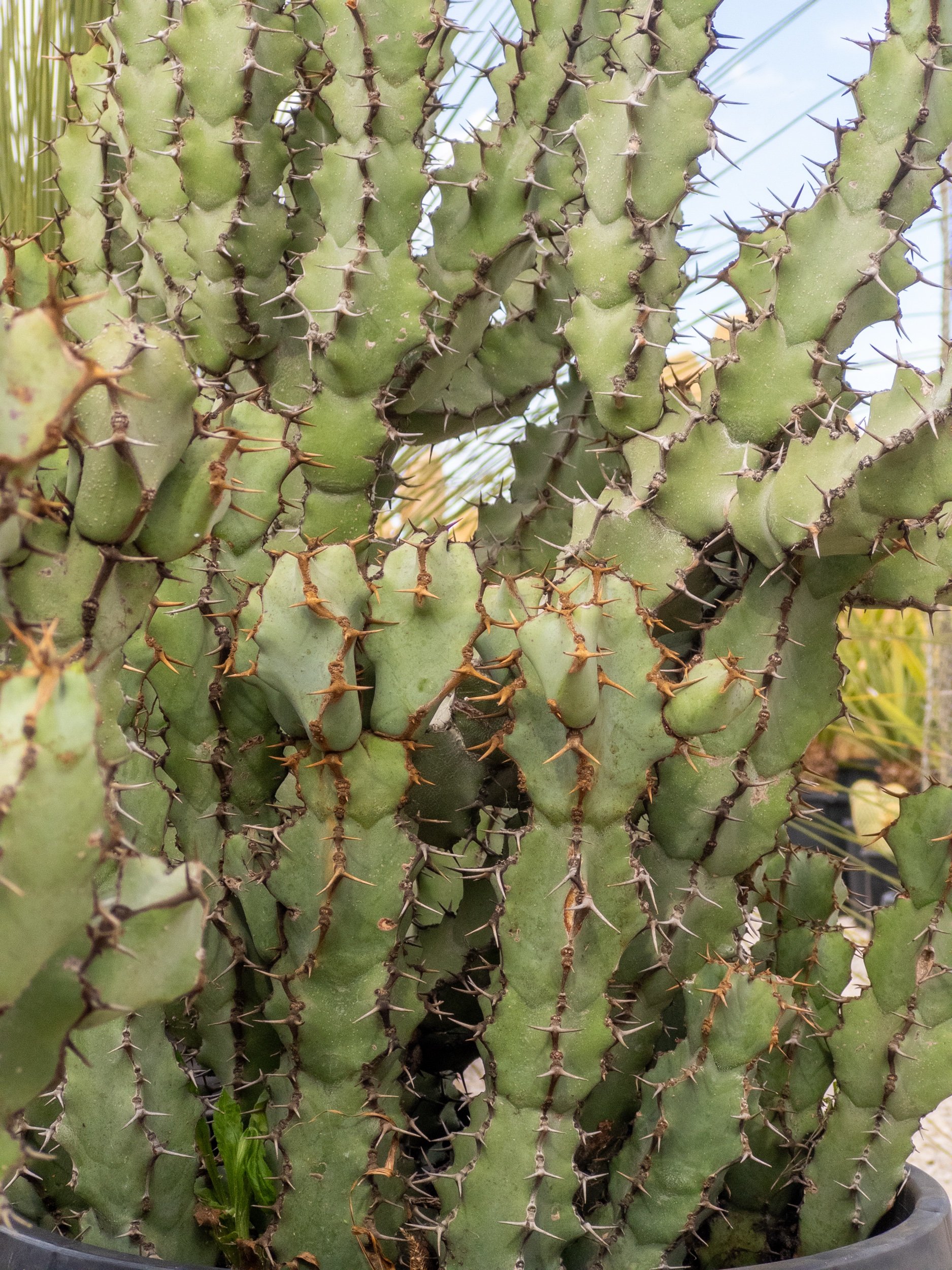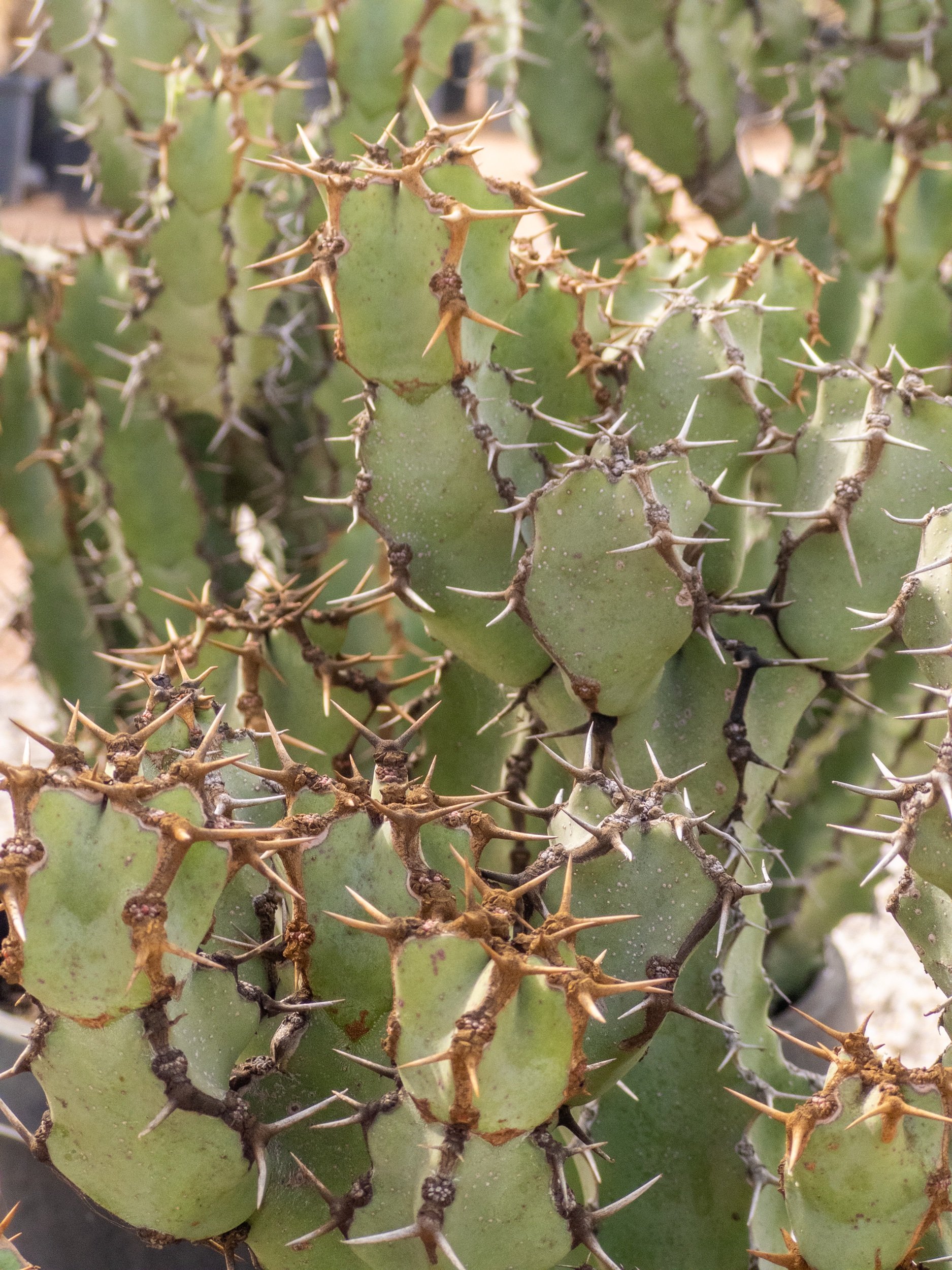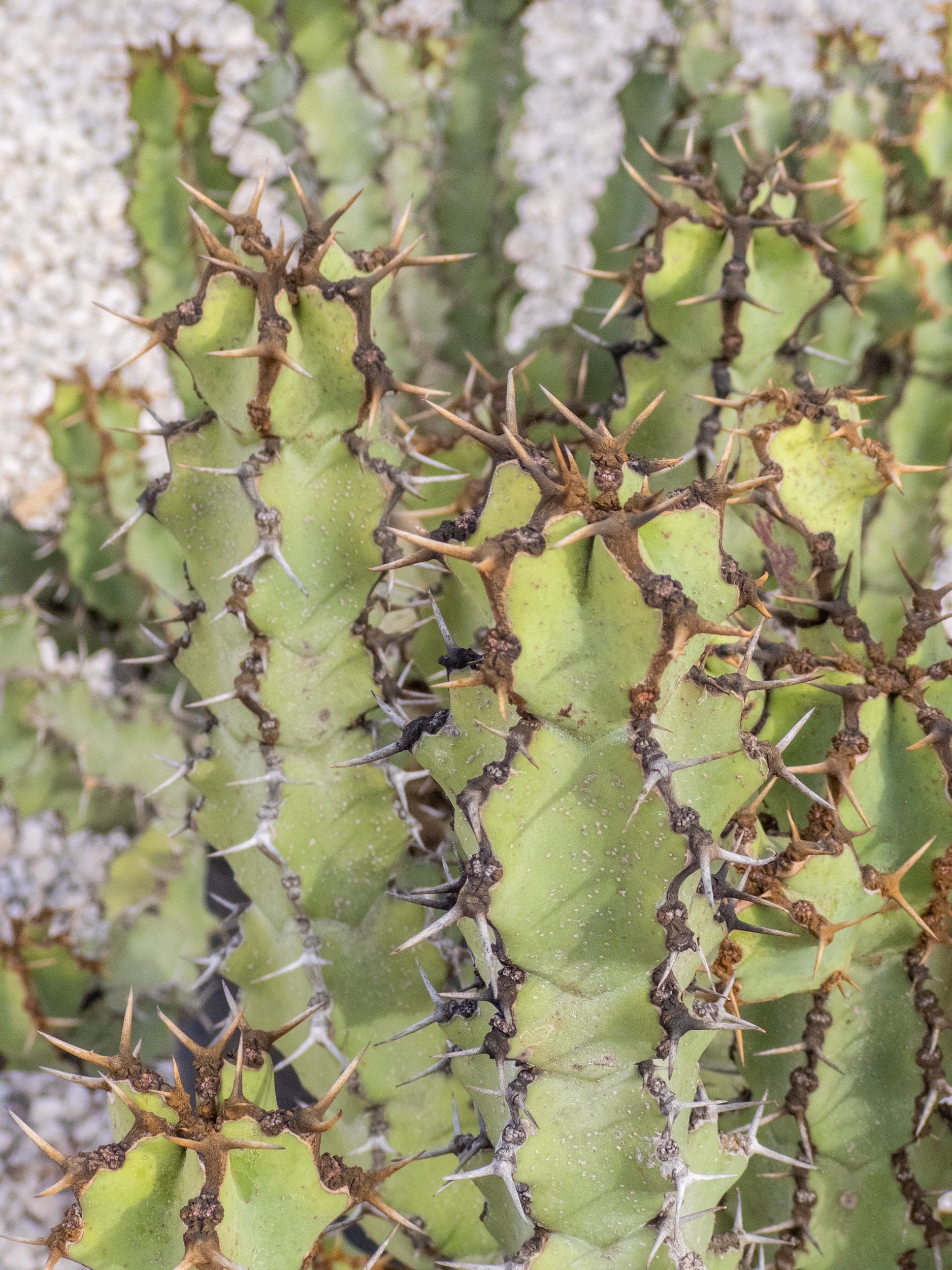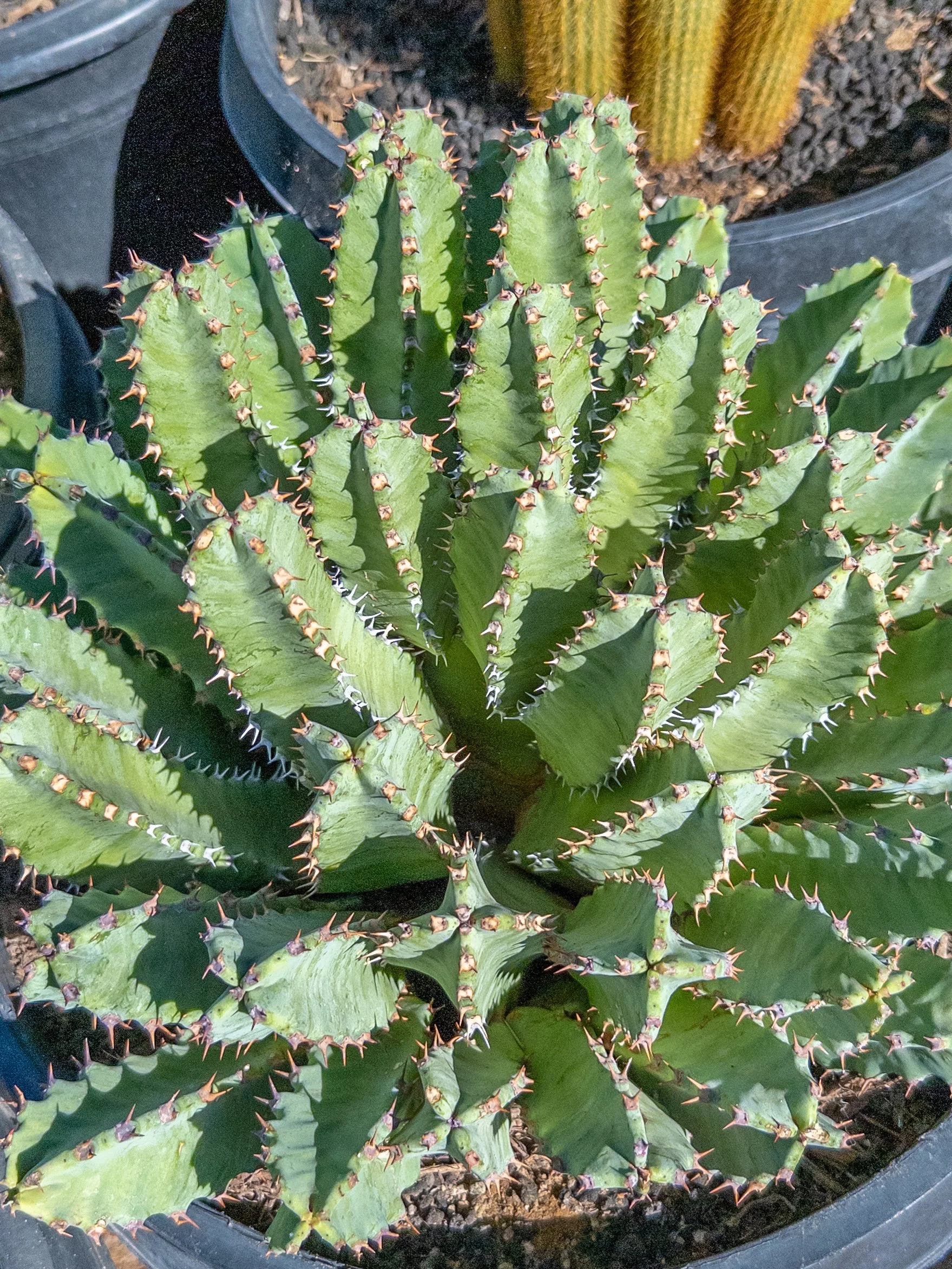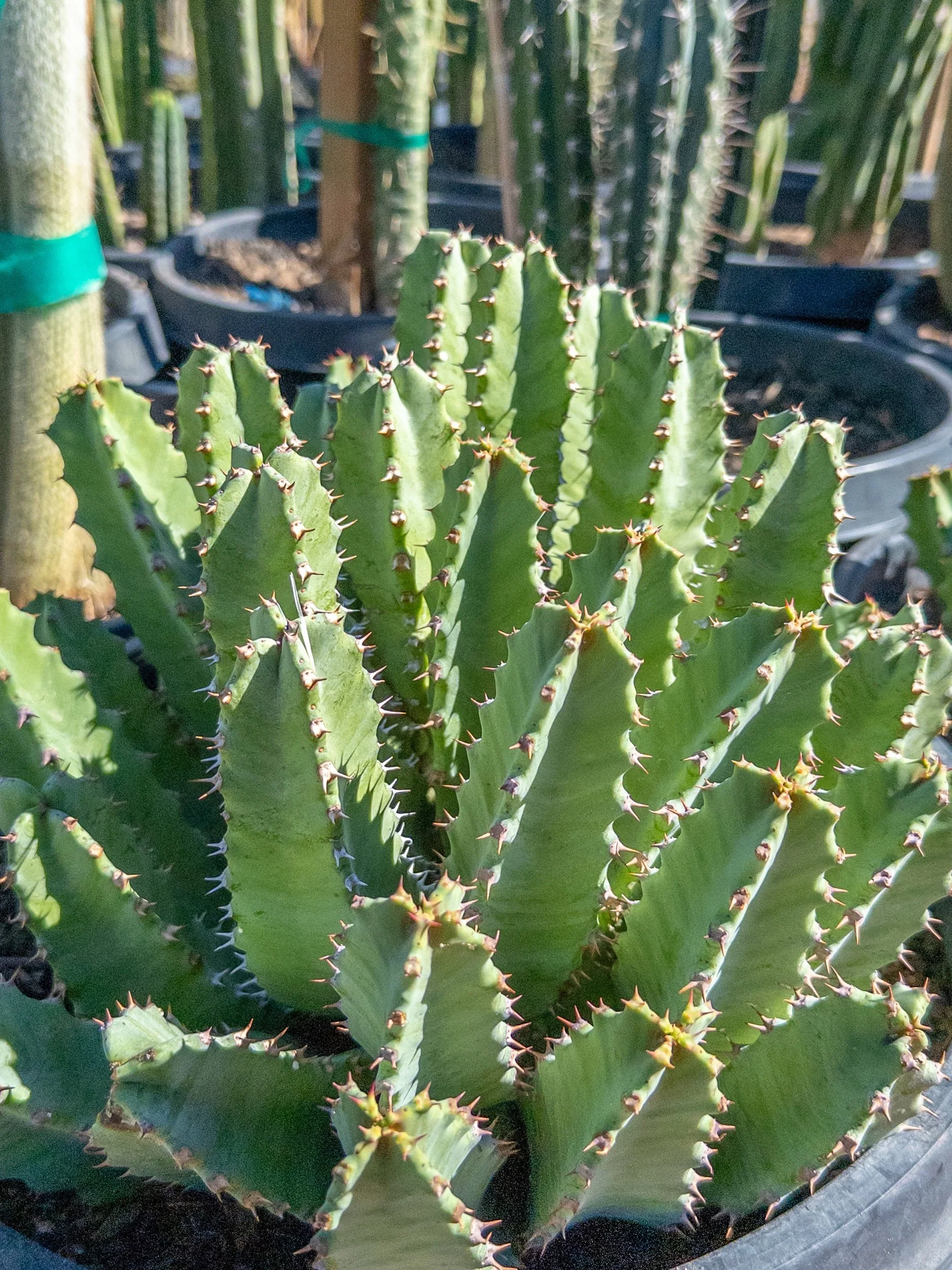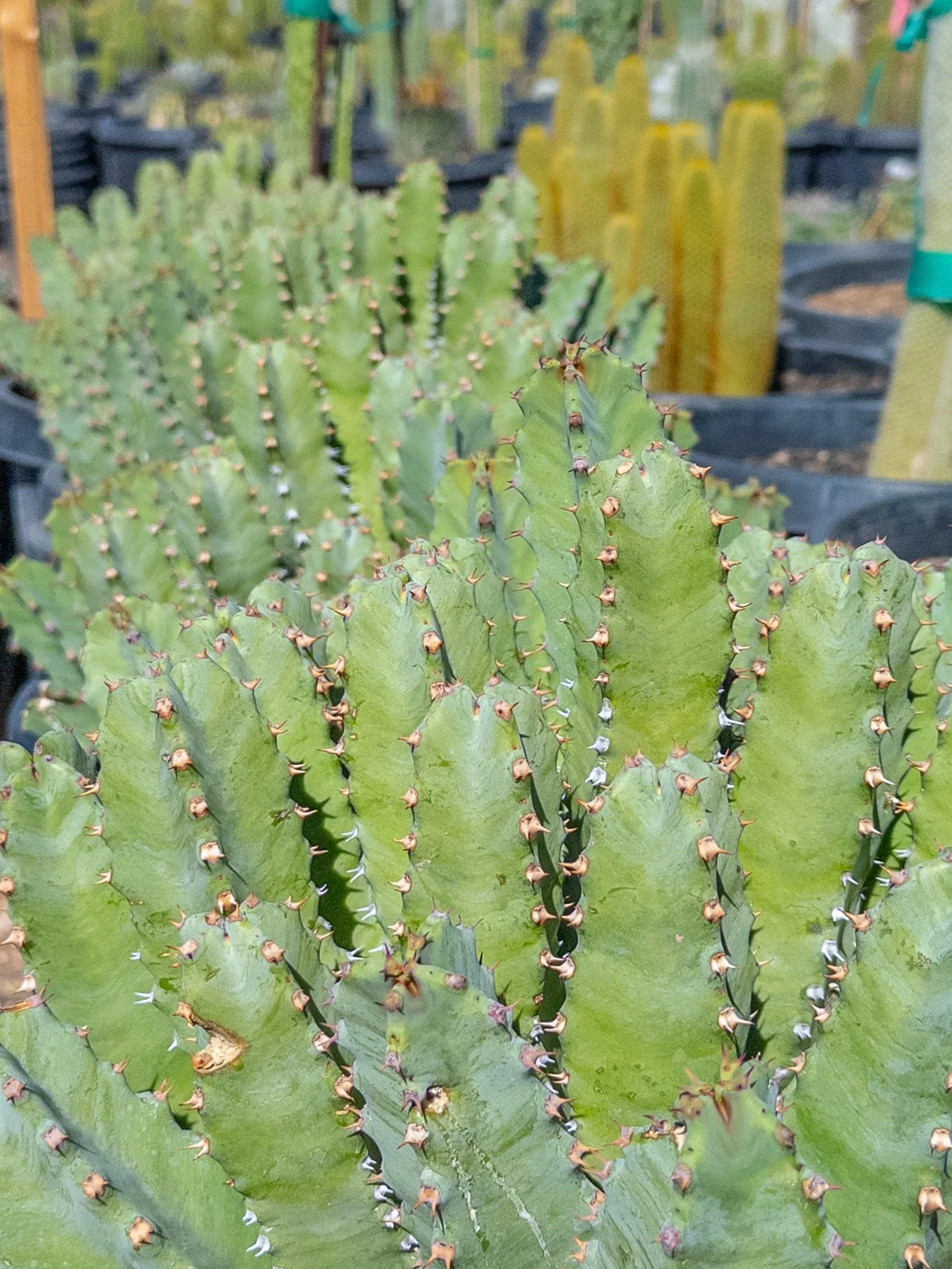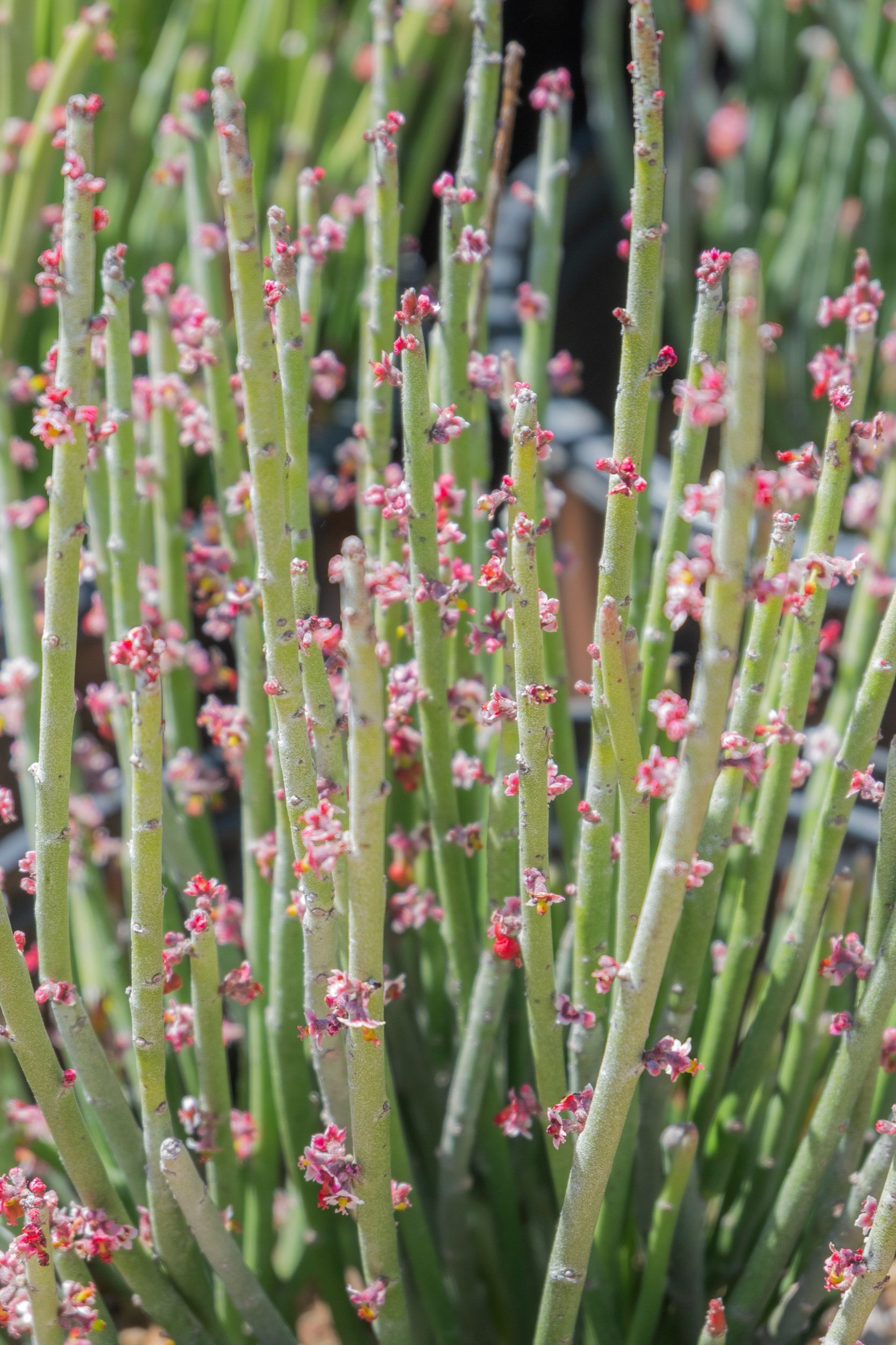 Image 1 of 5
Image 1 of 5

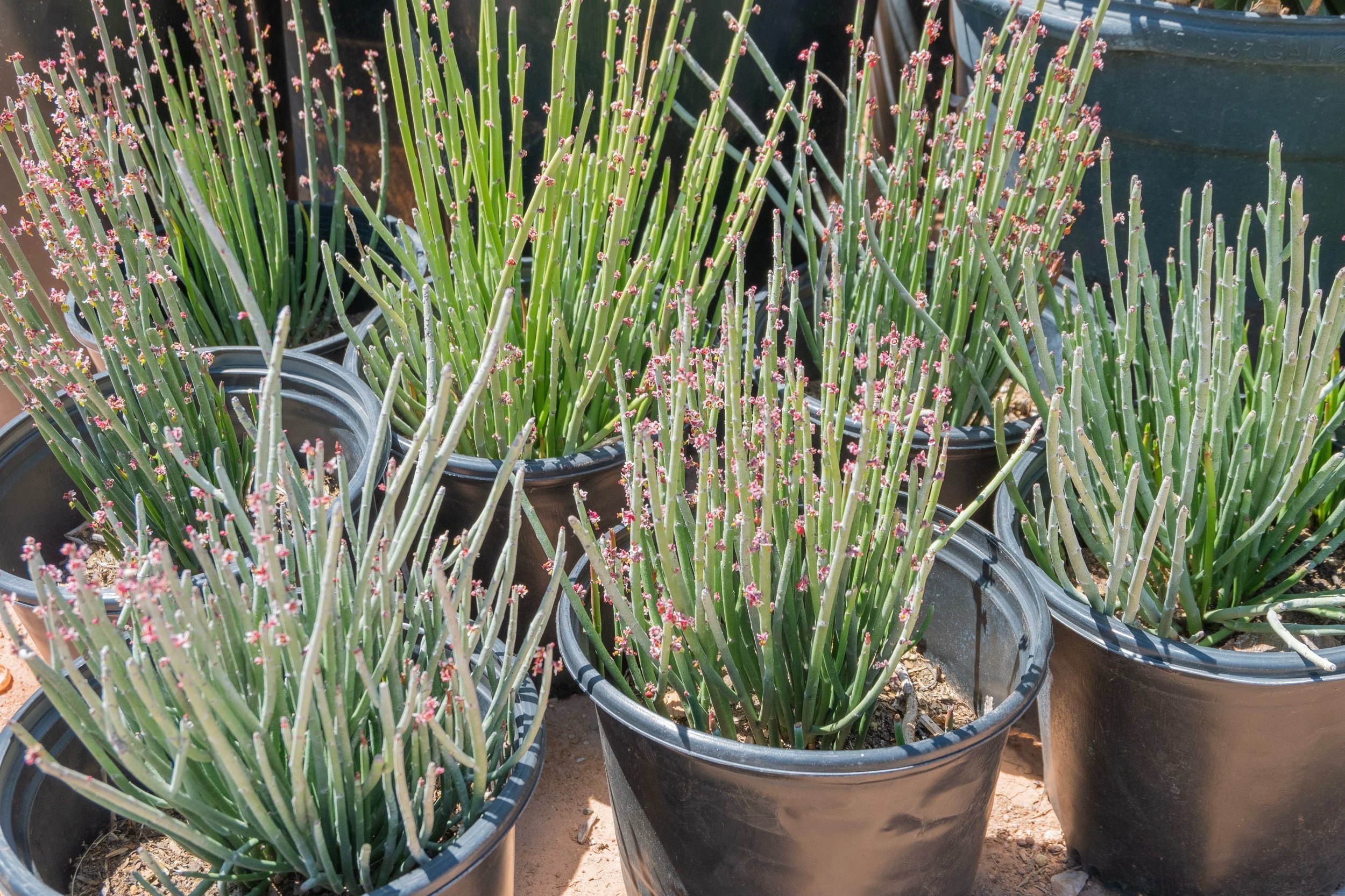 Image 2 of 5
Image 2 of 5

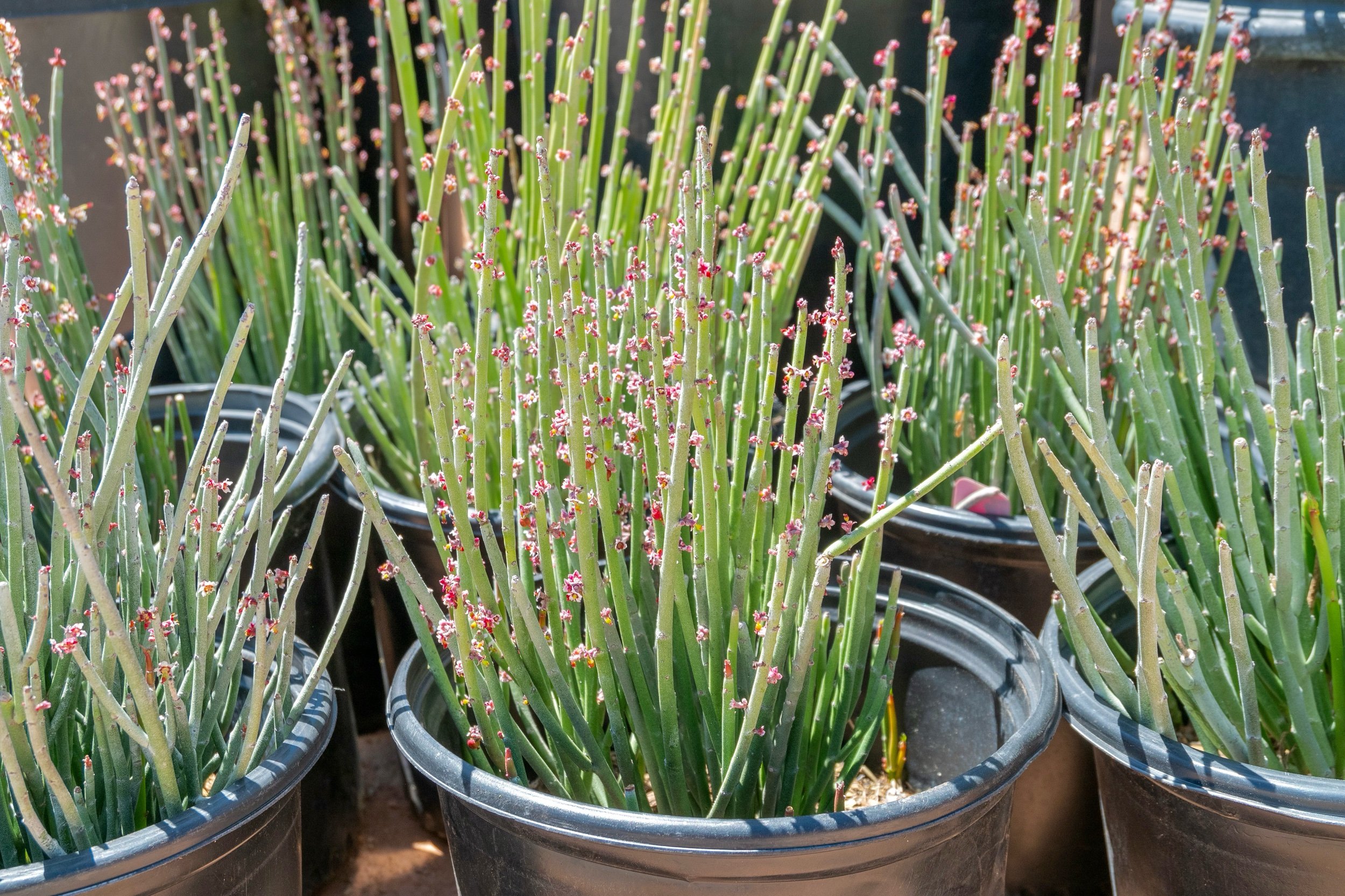 Image 3 of 5
Image 3 of 5

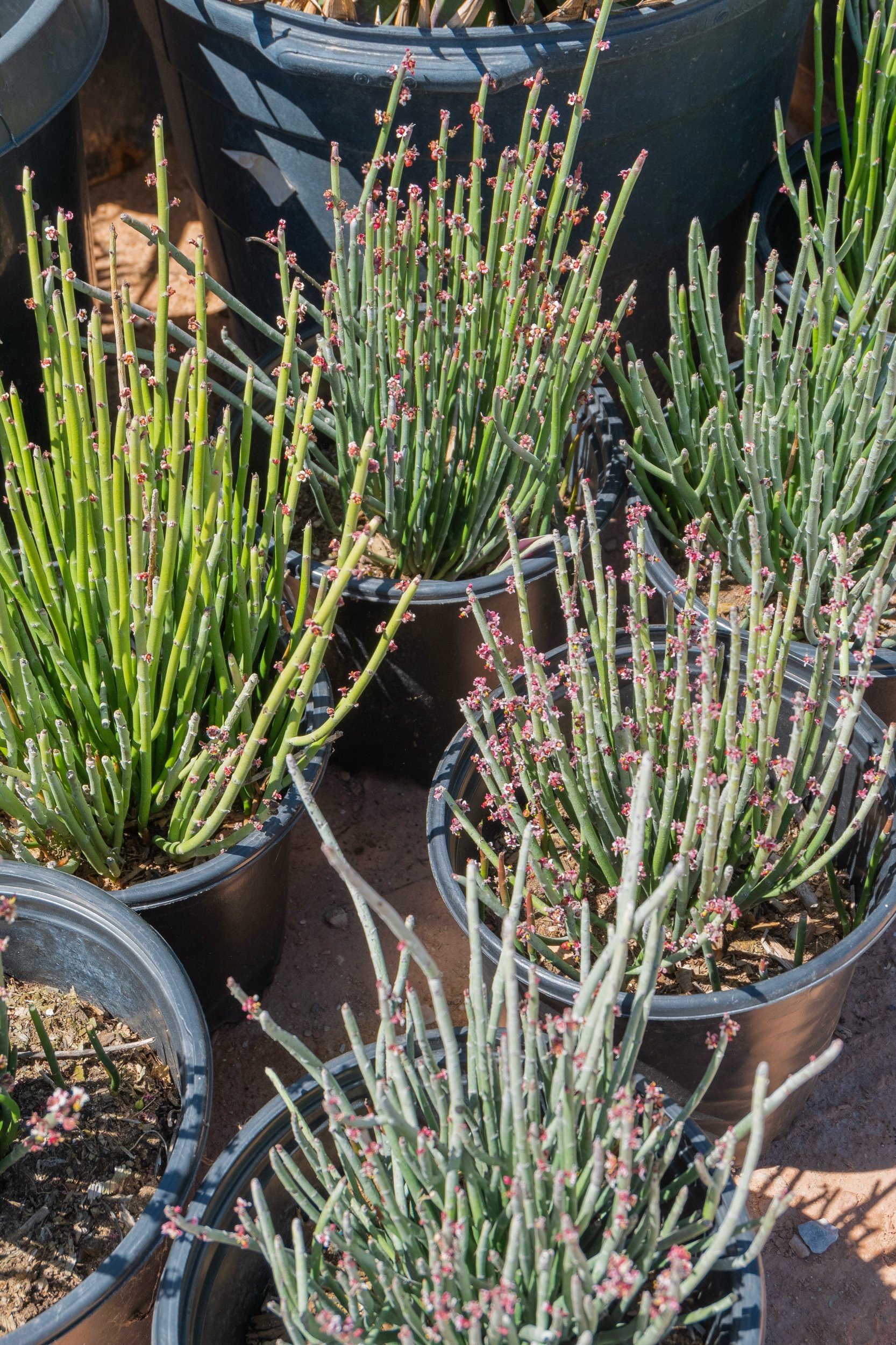 Image 4 of 5
Image 4 of 5

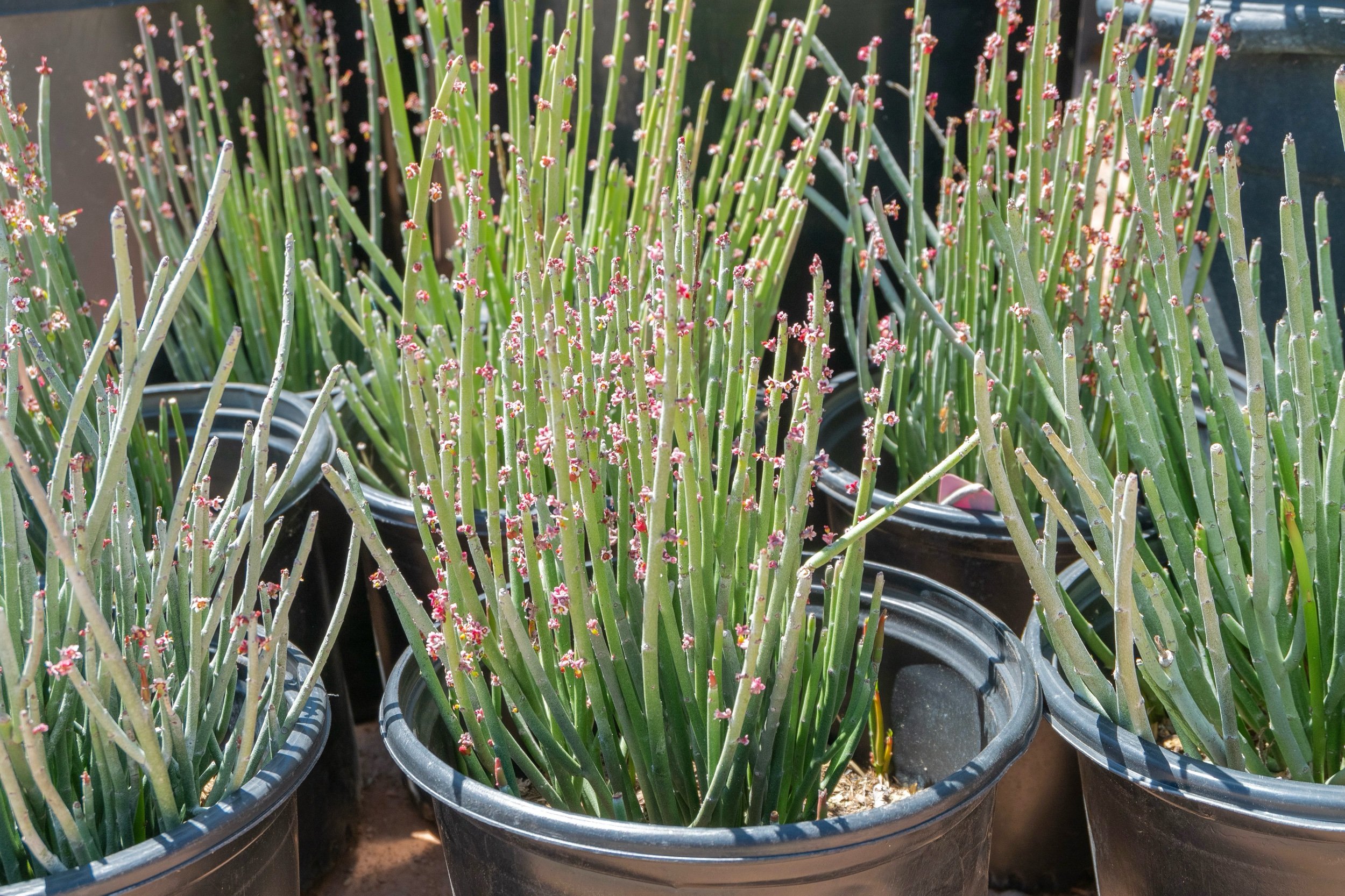 Image 5 of 5
Image 5 of 5






Euphorbia Antisyphilitica
Euphorbia antisyphilitica, also known as Candelilla, is a unique succulent plant native to northern Mexico and parts of Texas. Here's an overview of its characteristics and care requirements:
Characteristics:
Candelilla is a shrubby succulent that typically grows to about 2 to 3 feet tall, although it can sometimes reach up to 6 feet in height.
It features thick, cylindrical stems that are covered in small, waxy leaves. The stems have a bluish-green color and are often coated in a white, powdery substance, giving them a slightly frosted appearance.
In spring, Candelilla produces small, inconspicuous greenish-yellow flowers along the stems.
Cold Hardiness:
Candelilla is hardy in USDA zones 8 through 10, but it may require protection from frost in colder climates.
Soil and Water Preferences:
Candelilla prefers well-draining soil, such as sandy or gravelly soil mixed with organic matter.
Water sparingly, allowing the soil to dry out between waterings. Overwatering can lead to root rot, so it's best to err on the side of underwatering with this plant.
Sunlight Needs:
Candelilla thrives in full sun to partial shade. It can tolerate intense sunlight, making it suitable for sunny locations in the garden or landscape.
How to Take Care of it:
Watering: Water sparingly, allowing the soil to dry out between waterings. During the growing season, water more frequently, but still allow the soil to dry out between waterings. Reduce watering in winter when the plant is dormant.
Sunlight: Place in a location that receives plenty of sunlight, but protect from intense afternoon sun if necessary.
Temperature: Protect from frost and freezing temperatures, especially in colder climates. Consider bringing indoors or providing winter protection if temperatures drop below freezing.
Soil: Ensure the soil is well-draining to prevent waterlogged conditions, which can lead to root rot.
Pruning: Candelilla generally does not require pruning, but you can remove any dead or damaged stems as needed to maintain the plant's appearance.
With proper care and attention to its needs, Euphorbia antisyphilitica can be a unique and attractive addition to your succulent collection or desert landscape.
Euphorbia antisyphilitica, also known as Candelilla, is a unique succulent plant native to northern Mexico and parts of Texas. Here's an overview of its characteristics and care requirements:
Characteristics:
Candelilla is a shrubby succulent that typically grows to about 2 to 3 feet tall, although it can sometimes reach up to 6 feet in height.
It features thick, cylindrical stems that are covered in small, waxy leaves. The stems have a bluish-green color and are often coated in a white, powdery substance, giving them a slightly frosted appearance.
In spring, Candelilla produces small, inconspicuous greenish-yellow flowers along the stems.
Cold Hardiness:
Candelilla is hardy in USDA zones 8 through 10, but it may require protection from frost in colder climates.
Soil and Water Preferences:
Candelilla prefers well-draining soil, such as sandy or gravelly soil mixed with organic matter.
Water sparingly, allowing the soil to dry out between waterings. Overwatering can lead to root rot, so it's best to err on the side of underwatering with this plant.
Sunlight Needs:
Candelilla thrives in full sun to partial shade. It can tolerate intense sunlight, making it suitable for sunny locations in the garden or landscape.
How to Take Care of it:
Watering: Water sparingly, allowing the soil to dry out between waterings. During the growing season, water more frequently, but still allow the soil to dry out between waterings. Reduce watering in winter when the plant is dormant.
Sunlight: Place in a location that receives plenty of sunlight, but protect from intense afternoon sun if necessary.
Temperature: Protect from frost and freezing temperatures, especially in colder climates. Consider bringing indoors or providing winter protection if temperatures drop below freezing.
Soil: Ensure the soil is well-draining to prevent waterlogged conditions, which can lead to root rot.
Pruning: Candelilla generally does not require pruning, but you can remove any dead or damaged stems as needed to maintain the plant's appearance.
With proper care and attention to its needs, Euphorbia antisyphilitica can be a unique and attractive addition to your succulent collection or desert landscape.

